If some animals are good at hunting and others are suitable for hunting, then the gods must clearly smile on hunting.—Aristotle
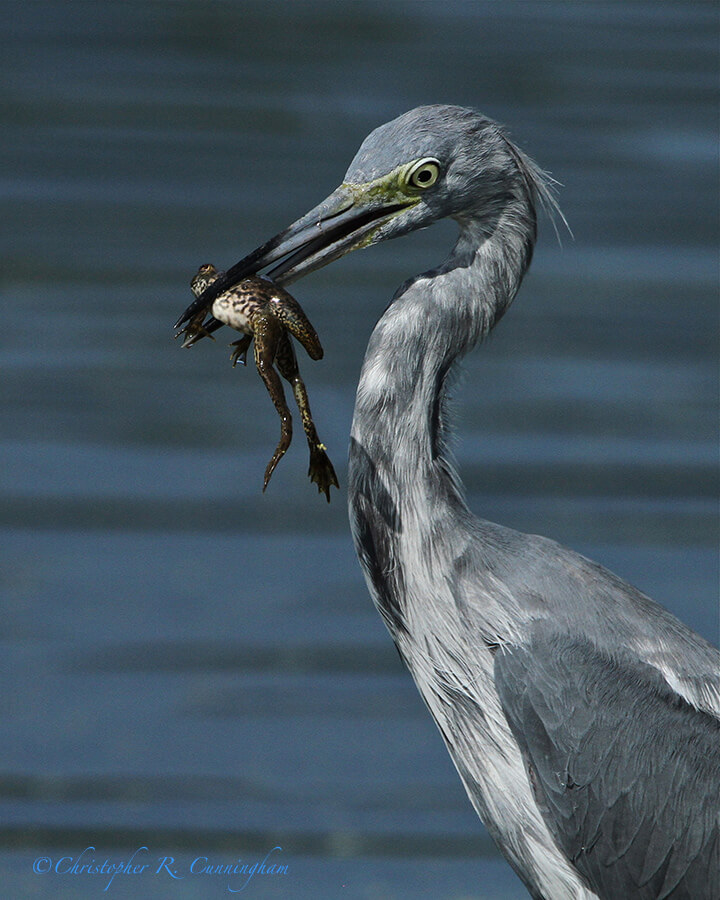
In addition to being the place to see American Alligators in Texas, Brazos Bend State Park is arguably one of the best birding locales on the Texas Gulf Coast. This 5000-acre park is conveniently located less than one hour from Houston in Fort Bend County and encompasses a variety of environments including freshwater marsh, coastal prairie, and Brazos River bottomland forest. Brazos Bend is a fine place to observe flycatchers, warblers and other songbirds during the spring and fall migrations. It is also a dependable place to see Prothonotary Warblers and Northern Parulas during the breeding season among the black willow, hackberry and cottonwood trees near the waters’ edge along what I have dubbed “Warbler Alley,” between Elm and 40-Acre Lakes.
What really stand out in my book, however, are the waders and other predatory birds that can be seen and photographed hunting in and around the edges of the shallow oxbow lakes, sloughs, and bayous of the park, among the American lotus, rice, cattails, reeds, and invasive water hyacinth.
Predators and Prey Abound. Water birds that can reliably seen hunting throughout the year include Great Blue and Little Blue Herons, Snowy Egrets, Great Egrets, Tricolored Herons, White Ibises, and Pied-billed Grebes. Cattle Egrets may also be observed hunting insects (especially grasshoppers and katydids) in the grassy areas of the park year-round, up to waters’ edge–even occasionally grabbing a frog or crawfish! An Anhinga paddling past with a fish speared on its beak is also a year-round possibility.
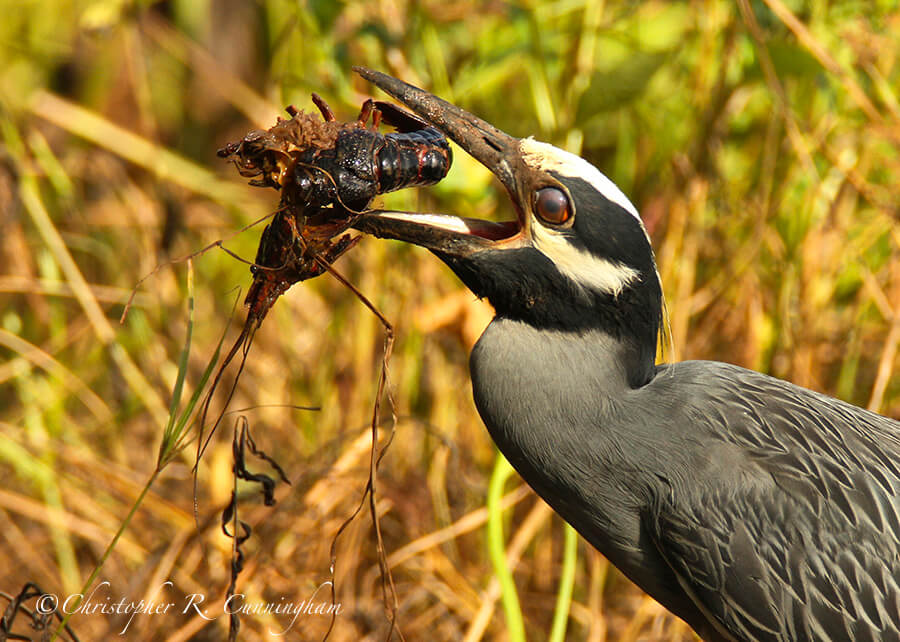
Although less common (or just more secretive?) than the other waders, a lucky visitor may see a Black-crowned Night-Heron grappling with a fish at any time during the year. Green Herons and Yellow-crowned Night-Herons are common during the warmer seasons. Glossy (spring) or White-faced (year-round) Ibises probing for crawfish in their burrows or other invertebrates are rarer sights. Likewise, an American Bittern stalking through the rice may rarely be seen during winter and spring months. Although reported in park literature as fairly common in summer and fall, after dozens of trips to Brazos Bend I have only observed a single Wood Stork. Perhaps I’m looking in the wrong places!
At Brazos Bend, herons and egrets can routinely be seen at waters’ edge picking out aquatic beetle and dragonfly larvae. Among the larger aquatic invertebrate prey items, crawfish predominate. Over thirty species of crawfish live in Texas, including the spectacular Red Swamp Crawfish. Crawfish, however, are apparently not always the most preferred prey of some of the waders–and who can blame them with that hard and spiny exoskeleton to crack through, not to mention process through their digestive tracts. Although waders at Brazos Bend usually tear into crawfish with gusto, I have seen Little Blue Herons toss back large crawfish, appendages flailing, presumably in the hopes of landing something better–a plump and juicy vertebrate, perhaps?
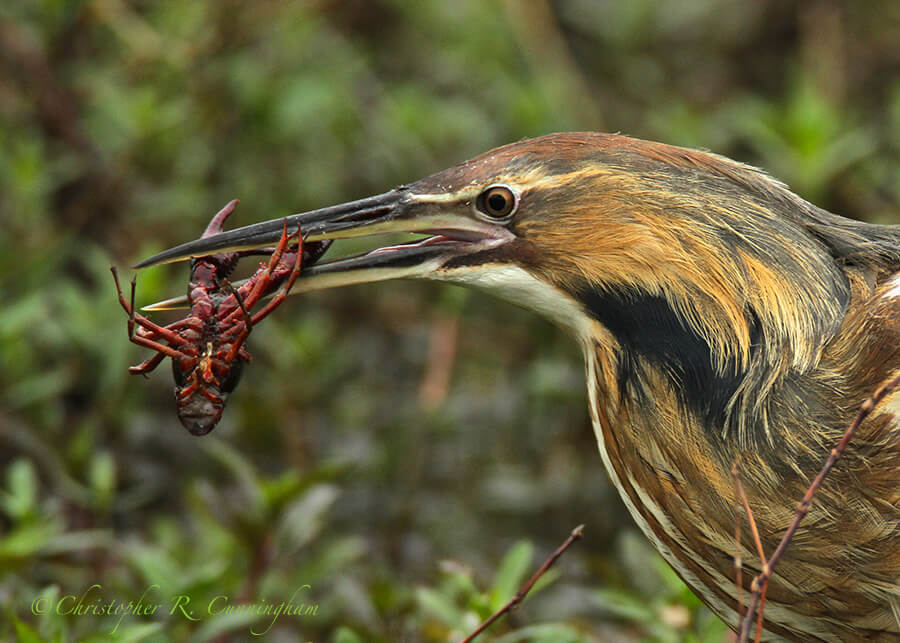
Shallow Brazos Bend waters teem with fish including gar, bowfin, warmouth, sunfish, and bullheads which are frequent wader prey. Amphibians seem to be a favorite of many Brazos Bend wading birds, judging by their exuberant behavior when they spear or grab one. Amphibians of Brazos Bend include the American Bullfrog, Eastern Newt (Notopthalmus viridescens), Southern Leopard Frog (Rana sphenocephala) and the Lesser Siren (Siren intermedia). The rarely-seen Lesser Siren is a large (up to 27 inches long), dark-colored, eel-like salamander that has lost its hind limbs through evolution. This salamander has been observed to fall prey to Great Blue Herons at Brazos Bend. Among amphibian hunting scenes, one most often sees birds, especially Little Blue and Green Herons, plucking unlucky American Bullfrog and other tadpoles from the water.
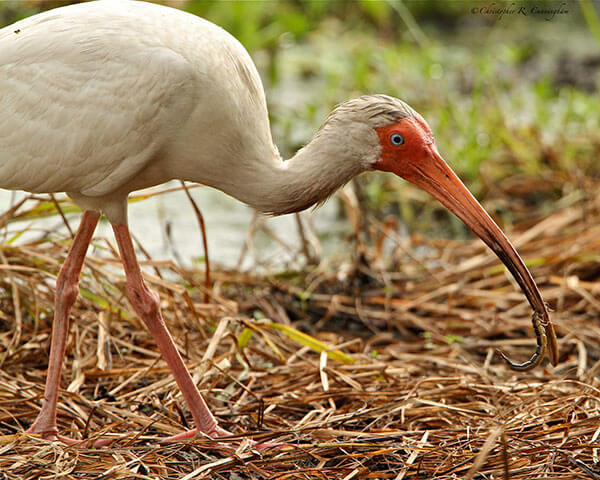
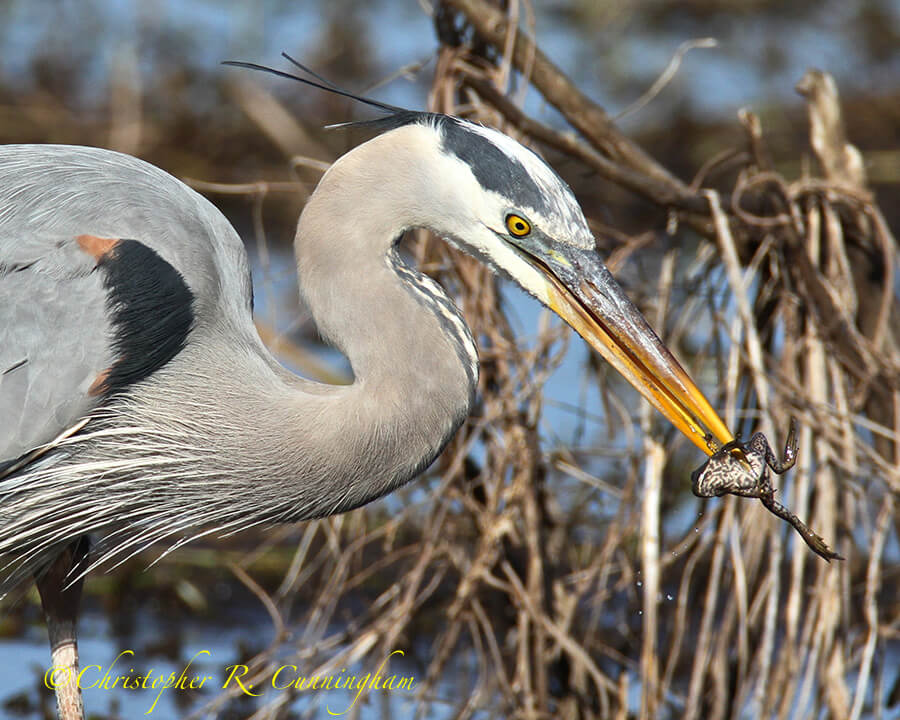
Hunting Behavior. An understanding of wader behavior is valuable for obtaining interesting hunting and fishing shots. Dozens of hunting behaviors and strategies have been reported for waders including “fishing” with insects (bait fishing), “underwing feeding” (shading the water with their wings), attracting prey by creating surface disturbances by blowing bubbles, and stirring up the bottom with their feet to flush out prey. Green Herons and Snowy Egrets seem to show the greatest diversity of hunting behaviors at Brazos Bend.
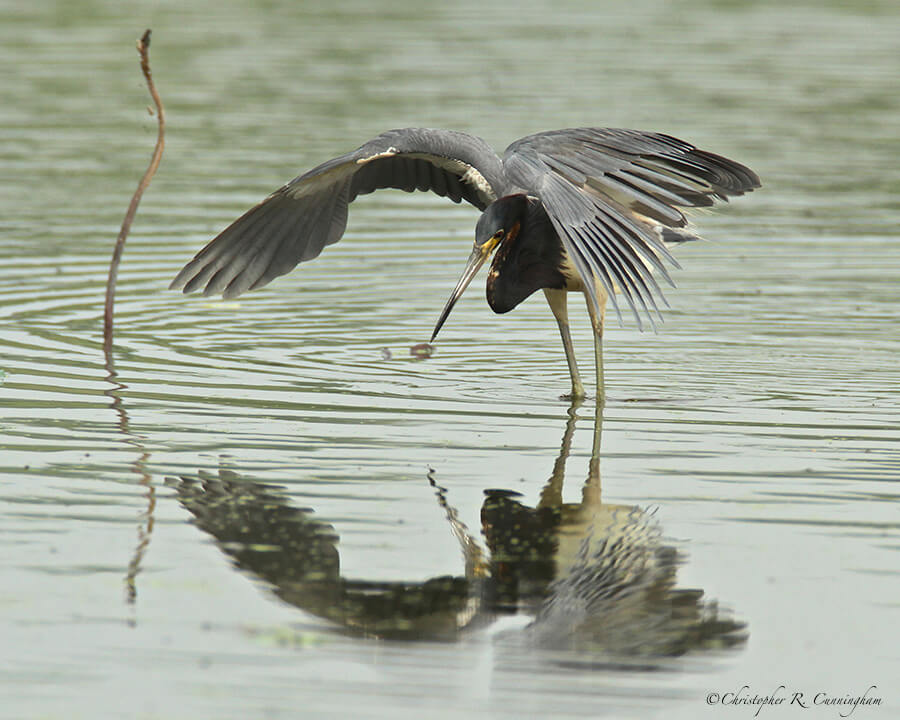
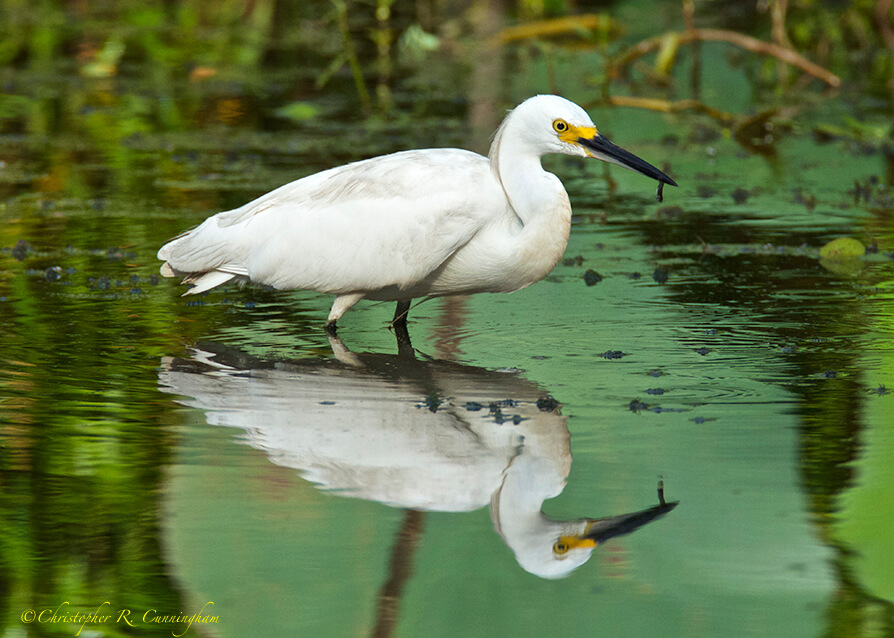
In terms of vigorousness of approach to hunting, there is clearly a spectrum. The Night-Herons are the least energetic and may sit for long periods in a near catatonic state waiting for prey to swim by. Black-crowns may sit in one place “fishing” by wagging or opening and closing the tip of their beak in the water to attract a fish. I have seen a Great Egret doing this as well at 40-acre Lake. Green and Great Blue Herons are slightly more energetic and, although they sit in one place quite a bit, they do wander out from a central location looking for prey. The ibises are the most frenetic and are constantly moving, looking, and probing nooks and crannies for food.
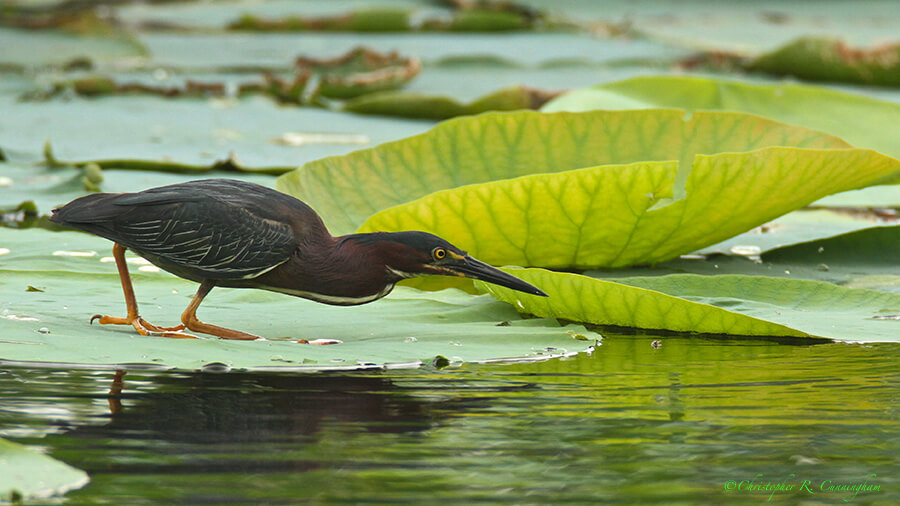
In general, hunting herons and egrets, startle and become attentive as they first notice prey. Green Herons, for example, give several indications of an impending strike. The bird may crouch and shift foot position for maximum grip and leverage, especially if it is standing on branches in or overhanging the water. This is important as the bird’s head and long neck will soon be cantilevered far out in front of its feet. Then comes the strike, the manipulation of the prey into a position where it can be swallowed (sometimes by tossing it into the air), and then down the hatch! A sip of water usually follows.
Ecology. One of the hopes of embarking upon this informal study of wader hunting behavior was to ascertain if different species of waders and other birds at Brazos Bend show clear preferences for specific types of prey. In other words, can patterns of resource partitioning to minimize competition be observed?
At this early stage, my initial sense overall is that waders and other predatory birds at Brazos Bend are remarkably undiscriminating in their choice of prey. If they can swallow it, then they will eat it! Of course, Great Blue Herons being the largest and most powerful of the waders (with the possible exception of Wood Storks, which are rare at Brazos) can take the largest and most vigorous prey items.
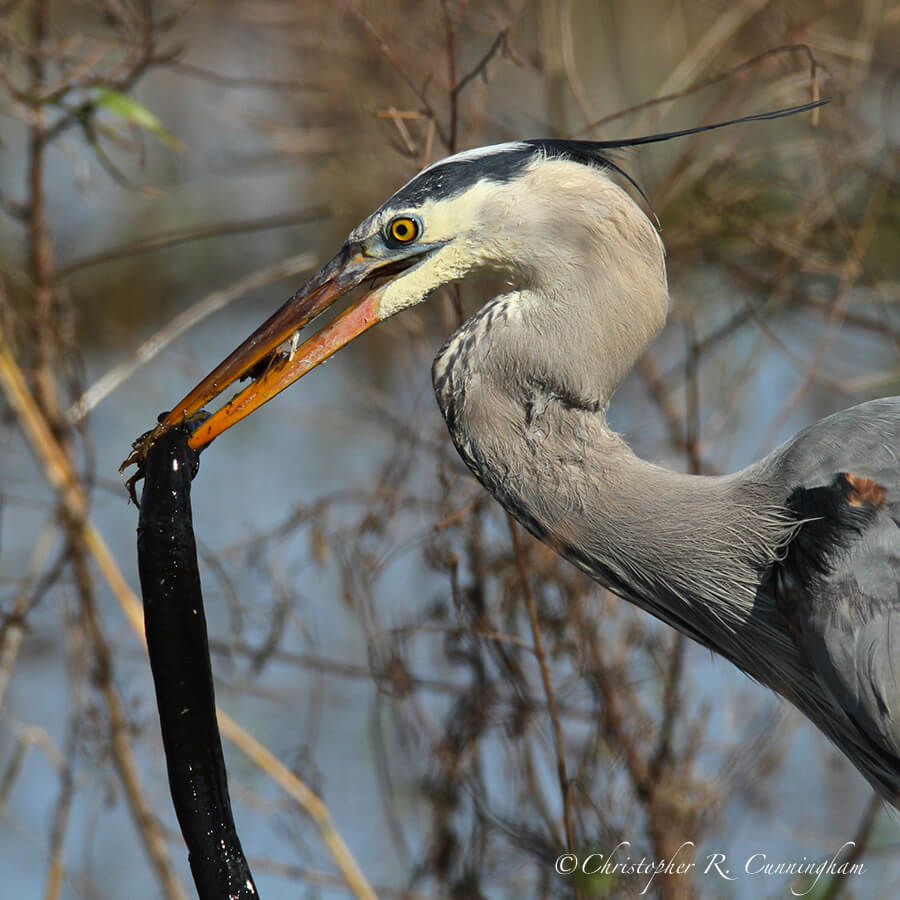
Fully-grown sirens, at over two feet long, for example, may be the sole preserve of Great Blues simply because many of the other birds are not big enough to swallow them. Likewise I have seen Great Blues eat large catfish–an impressive sight especially when one considers the potential choking menace their bony fin spines represent.
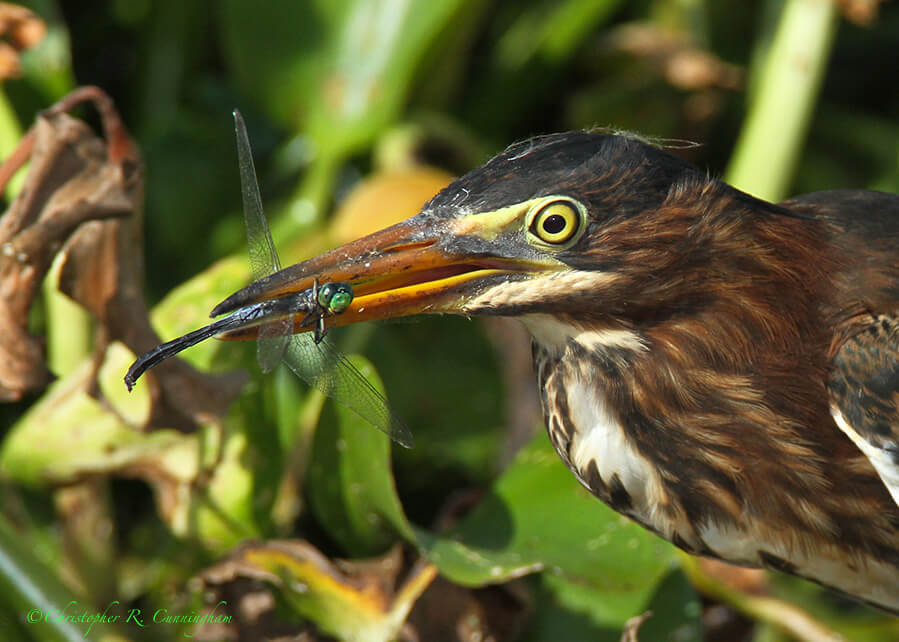
I have observed Green Herons eating crawfish, tadpoles, frogs, fish, dragonflies, and a variety of large and small aquatic insects and so must be counted among the least discriminating eaters. Similarly, Little Blue Herons seem to eat anything that moves and is small enough to swallow. So far I have seen Tricolored Herons eat aquatic insects and small fish only. Black-crowned Night-Herons seem to prefer fish. I have only observed Anhingas eating fish, but are reported to eat other vertebrates such as snakes and frogs and even some invertebrates (leeches).
Perhaps time and further observation will lead to a better understanding of which predator species prefer to eat which prey items at which time of year and under what circumstances. For example, late fall and winter seems to be prime time for hunting treefrogs along the southern margin of Pilant Lake. I have seen American Bitterns, Little Blue Herons, Tricolored Herons, and a Great Egret inspecting tall vegetation (mostly rice) for Green Treefrogs (Hyla cinerea) at this time of year.
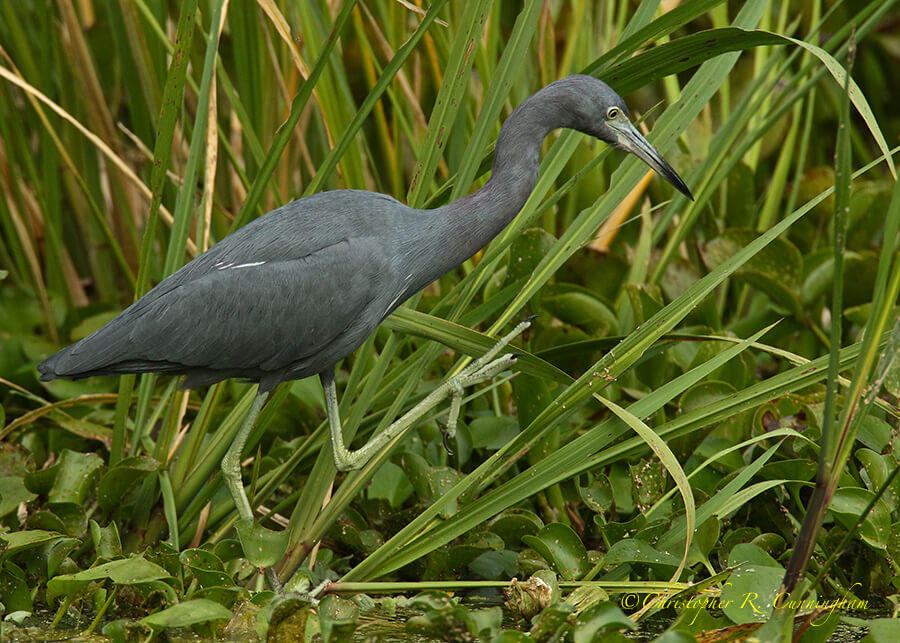
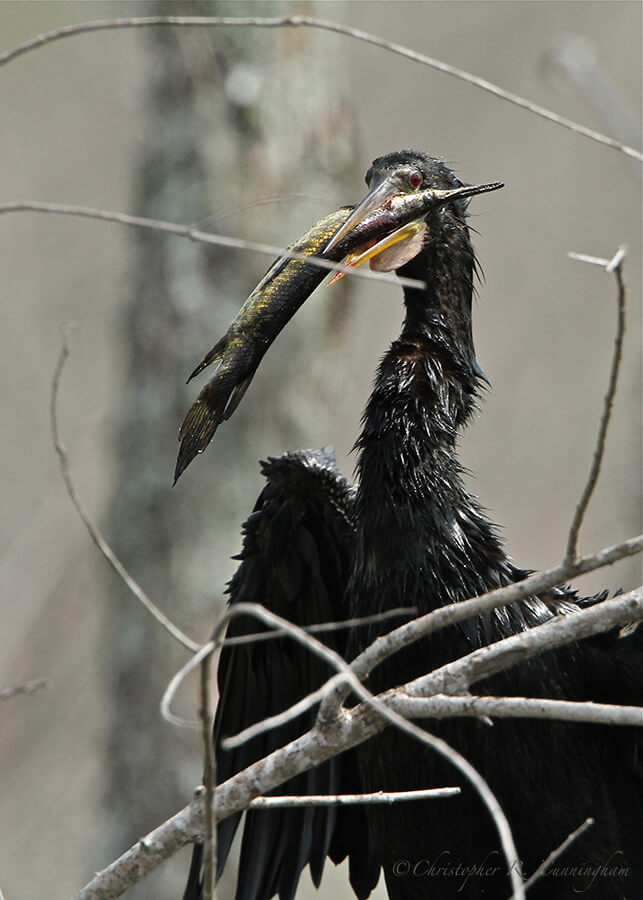
Photography. Digital technology has brought high-quality nature photography to the amateur enthusiast. Although optical conditions at Brazos Bend are often superb, especially early in the morning on Elm Lake and the south shore of Pilant Lake, photographing waders in the act of hunting is challenging given the speed and unpredictability of the action. The bird turning one way, rather than the other after the strike can destroy the shot.
Most of the images in this article were taken with my old Canon EOS 7D. Although an excellent photographic tool, the EOS 7D does tend to overexpose whites, especially on dark-colored birds with white beaks, spots, or stripes. As a result, I sometimes shoot with 1/3 to 2/3 of an f-stop negative exposure compensation to avoid “blowing out” the whites.
For bird photography, I now most often shoot with my new Canon EOS 7D Mark II and 600mm f/4 L IS USM (+1.4x teleconverter) mounted on a Wimberly II gimbal mount atop a Gitzo carbon fiber tripod, but will switch to a 100-400mm f/4.5-5.6L IS, or 300mm f/4 L IS, depending on conditions. Because the most heart-pounding action unfolds in a tiny fraction of a second, shooting in the range of 1/1000th of second or faster often leads to the best results. I also often shoot “high-speed synchronized” flash to fill in minor shadows on the subjects. This technique is often referred to as “fill-flash.” When I first started photographing birds I used the aperture priority setting, but now I shoot on the manual setting for the most control.
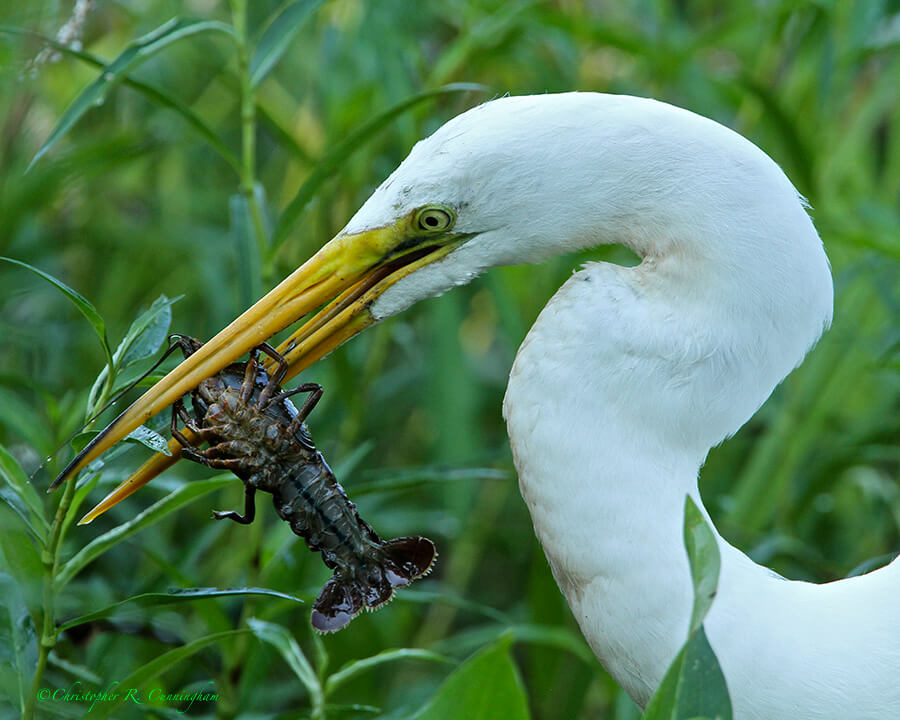
The Future. Although I have now seen and photographed many species of predatory birds with a variety of prey, I continue to hope for new and exciting predator-prey combinations at Brazos Bend. It can only be a matter of time before I capture an image of a Great Blue with a baby Alligator or Nutria clamped in its beak! Also I’ll continue to look for Great Blues hunting sirens on Pilant Lake, especially during the coming winter. Further, every so often I see a new type of wader hunting behavior. This is one of the things that makes going into the field so exciting—along with seeing brand new species of birds.
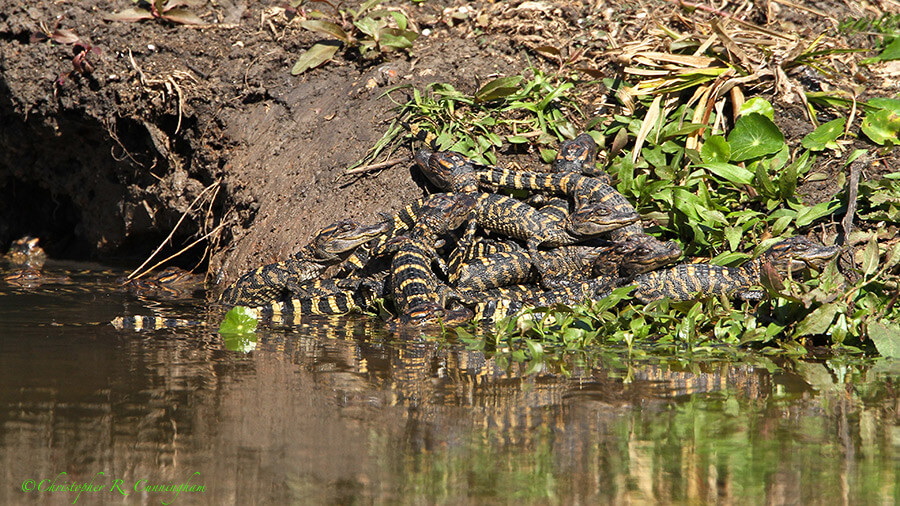
Although I have only seen a single Least Bittern, all regularly encountered U.S. species of herons and egrets occur at Brazos Bend State Park–except the Reddish Egret. Incidentally, Reddish Egrets, both dark and white morphs, do occur along the Texas Gulf Coast in marine-influenced habitats like salt marshes, tidal mudflats, and lagoons. They are unusually difficult to photograph with their odd, jerky ,and unpredictable movements while fishing. I always keep an eye out for them when I’m on the coast and hope to improve upon my images of these fascinating birds.
At some point, I hope to put the skills and knowledge I’ve developed photographing Texas waterbirds at Brazos Bend and other locales to use when I continue to stalk the hunters in more exotic settings like Australia and the Neotropics. Perhaps some day day I’ll be able to capture a Black Heron (Egretta ardesiaca) canopy fishing in Africa. With luck, I’ll continue to rack up images of additional species of predators and prey and new hunting/fishing strategies.
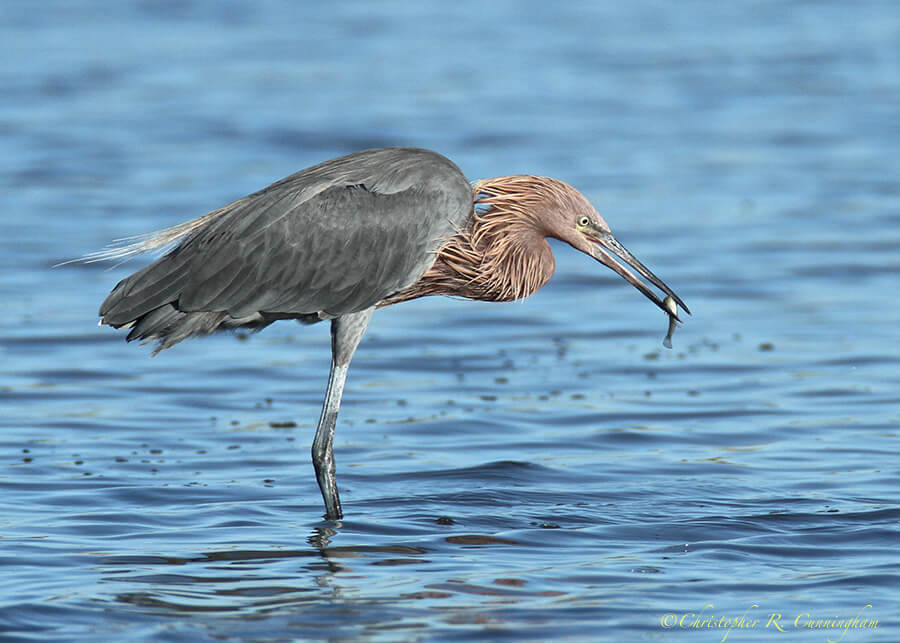
If you liked what you saw here, then please be sure and visit the “Stalking the Hunters: Additional Images” collection. Also, I have taken many more water bird hunting images. If I get enough positive responses/requests, then I may post additional similar galleries in the future.
Get out there and photograph some birds!–Chris Cunningham
©2015 Christopher R. Cunningham. All rights reserved. No text or images may be duplicated or distributed without permission.
Dear Chris,
I’m a french ornithologist and I’m trying to collect a maximum of observations about the bait-fishing behavior of Green Heron in order to establish a map of repartition around the World.
Could you tell me, please, the exact date of your pic of a Green Heron using a beetle?
And if the bird has been successful with its technique?
Do you have some other observations of this behavior?
Thank you for your help.
Regards,
Michel
Hello:
The image in this article was taken on June 10, 2014 at the southwest corner of Elm Lake. The bird moved the insect (an aquatic leaf beetle of the Genus Donacia, I think) around quite a bit, but was not successful while I watched. I also saw a Green Heron, likely the same bird, in the same exact spot the morning of June 8, 2014 doing the same thing. That morning was very gloomy and foggy, however, and I did not bother trying to photograph the activity. In this case, I only observed the bird for a minute or two before it was spooked by passersby—but I did not see a fish taken, either.
Interestingly, on 40-Acre Lake on July 8, 2014 I observed a Great Blue Heron placing an insect on the surface of the water and staring at it for a few seconds. A gentle current moved the the insect away from the bird quite quickly, and the bird plucked the insect from the water and ate it. I wonder what would have happened if the insect had stayed conveniently in place. Regards, Chris
Hey Chris- You definitely get my vote to publish additional similar galleries. I’ve looked at thousands of pictures of wildlife, especially birds, and they don’t get any better than what you’ve accomplished.
I especially liked the Yellow-Crowned Night-Heron shown above. Looks like it will be a pretty big job to get that one down. Has it caught the American fever of ordering meals larger than are fit for the human stomach?
Keep shootin’!
Dennis